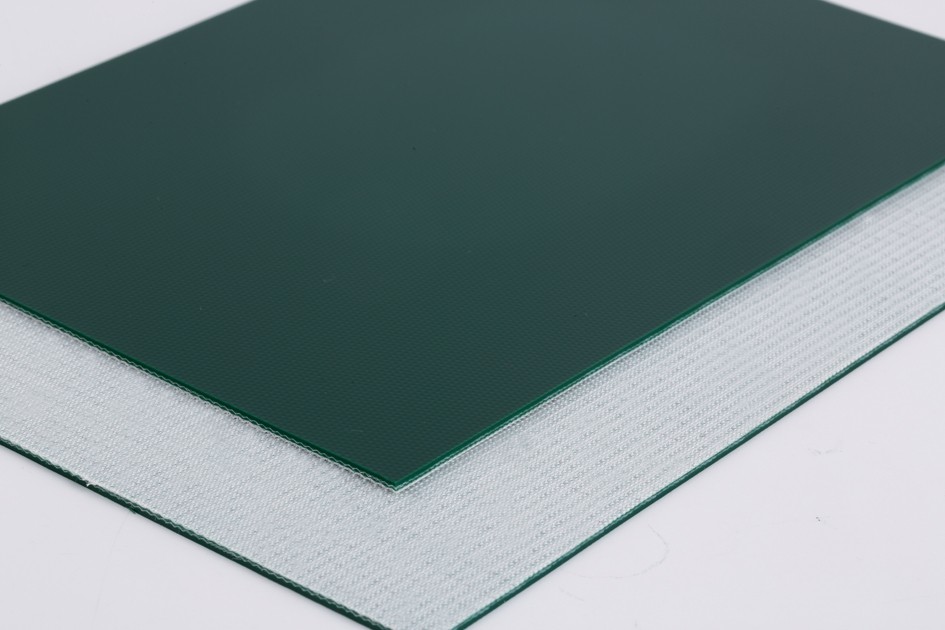Introduction
In the intricate web of industrial processes, conveyor belts play a pivotal role in ensuring the seamless movement of materials and products. The quality of these conveyor belts can significantly impact operational efficiency and product quality. Among the diverse materials used for conveyor belts, high-quality silicone belts stand out for their unique set of characteristics and contributions to industrial processes.

Key Characteristics of High-Quality Silicone Belts
- Temperature Resistance
One of the defining features of high-quality silicone belts is their exceptional temperature resistance. This property allows these belts to function reliably in environments with extreme temperatures, ranging from freezing cold to scorching heat. The ability to withstand such conditions ensures uninterrupted operation, contributing directly to operational efficiency.
- Durability
Durability is a critical factor in the performance of conveyor belts. High-quality silicone belts are engineered to resist wear and tear effectively, leading to extended operational lifespans. Reduced maintenance requirements and longer intervals between replacements contribute not only to cost savings but also to the overall efficiency of industrial processes.
- Flexibility
The flexibility of silicone belts is another key characteristic that enhances their contribution to operational efficiency. These belts can adapt to various conveyor configurations, including those with tight turns and complex paths. This adaptability increases the versatility of the conveyor system, allowing for efficient material handling in diverse industrial settings.
- Chemical Resistance
Chemical resistance is paramount, especially in industries where exposure to corrosive substances is common. High-quality silicone belts excel in protecting against chemical damage, ensuring the integrity of the conveyed materials and, consequently, the quality of the end products.
Manufacturing Standards and Impact on Quality
Understanding the manufacturing processes of silicone belts sheds light on their overall quality. High-quality silicone belts are produced with meticulous attention to detail and adherence to industry standards. The molding processes, quality control measures, and compliance with recognized standards ensure consistency and reliability in the production of these critical components.
Industries Benefiting from High-Quality Silicone Belts
- Food Processing
In the food processing industry, maintaining hygiene and complying with strict food safety regulations are paramount. High-quality silicone belts play a crucial role in ensuring the safe and contamination-free handling of food products. Their resistance to chemicals, easy cleaning properties, and compliance with food-grade standards make them an ideal choice in this sector.
- Electronics Manufacturing
The electronics manufacturing industry demands precision and reliability, especially when conveying sensitive electronic components. Silicone belts with Electrostatic Discharge (ESD) properties contribute to the protection of electronic devices from static electricity, ensuring the integrity of the components and the overall quality of the end products.
- General Manufacturing
Across various manufacturing processes, the adaptability and durability of high-quality silicone belts make them a preferred choice. Whether in automotive, textile, or other manufacturing sectors, these belts contribute to operational efficiency by withstanding the challenges posed by different materials and production environments.
Maintenance Practices for High-Quality Silicone Belts
Maintaining the performance of silicone belts is crucial for sustaining operational efficiency and ensuring product quality. Several key maintenance practices contribute to achieving these goals:
- Cleaning Methods
Regular cleaning is essential for preventing contamination and maintaining the performance of silicone belts. The smooth surface of these belts makes cleaning relatively straightforward, contributing to the overall cleanliness of the production process and the quality of the final products.
- Tension Adjustments
Proper tension is critical for the smooth operation of conveyor belts. Regular tension adjustments ensure that the belts operate within the specified parameters, preventing issues such as slippage and misalignment. This proactive maintenance practice contributes to uninterrupted production and enhanced efficiency.
- Routine Inspections
Routine inspections are a proactive approach to identifying potential issues before they escalate. Regular checks for wear and tear, damage, or misalignment allow for timely interventions, reducing the risk of unexpected breakdowns and downtime. This contributes to the overall reliability of the conveyor system and, by extension, the efficiency of industrial processes.
Operational Efficiency and Product Quality Impact
- Reduced Downtime
High-quality silicone belts contribute significantly to reducing downtime in industrial processes. Their durability, resistance to wear, and minimal maintenance requirements ensure continuous operation. Reduced downtime translates directly to increased production output, making these belts a valuable asset in achieving operational efficiency.
- Enhanced Product Quality
Silicone belts play a vital role in maintaining the quality of products during the production and conveying processes. Their chemical resistance ensures that conveyed materials remain uncontaminated, contributing to the overall purity of end products. In industries where product quality is paramount, the use of high-quality silicone belts becomes instrumental.
- Overall Impact on Cost-Effectiveness
The cumulative impact of reduced downtime, enhanced product quality, and minimal maintenance requirements leads to overall cost-effectiveness. The initial investment in high-quality silicone belts pays off in the long run as operational efficiency increases, and production costs decrease. Industries benefit not only from cost savings but also from improved competitiveness in the market.
Conclusion
In conclusion, the role of high-quality silicone belts in industrial processes goes beyond being mere conveyor components. These belts, with their unique characteristics and contributions, are integral to achieving and maintaining operational efficiency and product quality. From their temperature resistance to their adaptability in diverse industries, silicone belts demonstrate their versatility and reliability.
Understanding the key characteristics, manufacturing standards, and maintenance practices associated with high-quality silicone belts allows industries to harness their full potential. Whether in food processing, electronics manufacturing, or general manufacturing, the impact of these belts on reducing downtime and ensuring product quality is undeniable. As industries continue to evolve, the reliance on high-quality silicone belts will likely grow, emphasizing their crucial role in the intricate dance of industrial processes.





